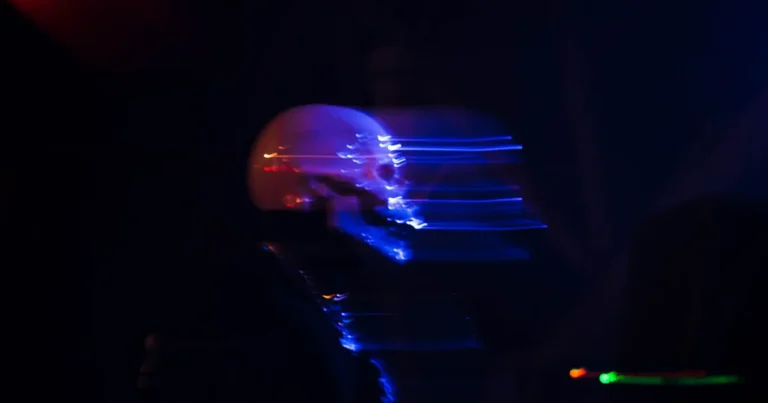Support our educational content for free when you purchase through links on our site. Learn more
What Does “Take On Me” Mean in English? 🎤 7 Surprising Insights (2025)
If you’ve ever found yourself humming that unforgettable synth riff or singing along to Morten Harket’s soaring vocals, you’re not alone. But have you ever stopped to wonder—what does “Take On Me” actually mean in English? Is it just a catchy phrase, or is there a deeper story behind those iconic words? Spoiler alert: it’s way more intriguing than you think!
In this article, we’ll unravel the mystery behind the lyrics, explore the groundbreaking music video that changed the game, and dive into the cultural legacy that keeps this 80s synth-pop anthem alive today. Plus, we’ll decode 7 key lines from the song that reveal hidden messages you probably missed. Ready to take on this classic with us? Let’s jump in!
Key Takeaways
- “Take On Me” is a heartfelt plea for love and connection, blending English with Norwegian linguistic nuances that add emotional depth.
- The song’s innovative rotoscoped music video amplified its meaning and helped it become a global sensation.
- A-ha’s unique synth-pop style and Morten Harket’s vocal range make the song a timeless classic in the 80s music scene.
- The phrase “take on me” can be interpreted as both a challenge and an invitation, reflecting themes of vulnerability and urgency.
- Numerous covers and remixes highlight the song’s versatility and enduring influence across genres.
- Understanding 80s synth-pop lyrics requires attention to metaphor, cultural context, and vocal delivery.
Ready to explore more synth-pop gems?
- 👉 Shop 80s Synth Pop Vinyl & CDs: Amazon | Walmart | Etsy
- Discover Synth Pop Music Collections: Amazon | Walmart
Table of Contents
- ⚡️ Quick Tips and Facts About “Take On Me”
- [🎵 The Story Behind “Take On Me”: Origins and Background] (#the-story-behind-take-on-me-origins-and-background)
- 🔍 What Does “Take On Me” Mean in English? A Deep Dive Into the Lyrics
- 🎤 7 Key Lyrics Explained: Unlocking the Song’s Hidden Messages
- 🎬 The Iconic Music Video: How Visuals Amplify the Meaning
- 💡 Cultural Impact: Why “Take On Me” Still Resonates Today
- 🎸 A-ha’s Influence: How the Band’s Style Shapes the Song’s Interpretation
- 📝 Common Misconceptions About “Take On Me” Lyrics and Meaning
- 🎧 Cover Versions and Remixes: How Others Interpret the Song’s Message
- 📊 Fun Facts and Trivia: Behind the Scenes of “Take On Me”
- 🛠️ Quick Tips for Understanding 80s Synth-Pop Lyrics Like “Take On Me”
- 🔗 Recommended Links for Further Exploration
- ❓ Frequently Asked Questions About “Take On Me” Meaning
- 📚 Reference Links and Sources
- 🏁 Conclusion: Why “Take On Me” Remains a Timeless Classic
Quick Tips and Facts About “Take On Me”
To understand the meaning of “Take On Me” by A-ha, let’s first explore some quick tips and facts. The song, released in 1985, is a synth-pop classic that has become iconic for its catchy melody and innovative music video. For fans of synth-pop music, checking out Iconic Synth Pop Songs can provide more insights into the genre.
Introduction to “Take On Me”
“Take On Me” is not just a song; it’s an experience that combines powerful vocals, a memorable synthesizer riff, and a groundbreaking music video. The song’s meaning can be interpreted in several ways, but at its core, it’s about a plea for love and connection. You can read more about the song’s background and meaning on our related article about Take On Me.
Key Facts About the Song
- Release Year: 1985
- Genre: Synth-pop, New Wave
- Artist: A-ha
- Writers: Pål Waaktaar-Savoy, Magne Furuholmen, Morten Harket
- Producers: Tony Mansfield (1984 version), Alan Tarney (1985 version)
- Chart Performance: Reached #1 in several countries, including the US, and #2 in the UK
The Story Behind “Take On Me”: Origins and Background

The Birth of a Classic
“Take On Me” was born out of the creative minds of Pål Waaktaar-Savoy, Magne Furuholmen, and Morten Harket, the trio behind the Norwegian band A-ha. The song’s origins date back to the early 1980s, with the band aiming to create something unique and catchy. For more on the band’s history and other synth-pop classics, visit our 80s Synth Pop category.
The Evolution of “Take On Me”
The song underwent significant changes from its initial version in 1984 to the final version released in 1985. The 1985 version, produced by Alan Tarney, is the one that gained international recognition and became a hit. The evolution of “Take On Me” is a testament to the band’s perseverance and creativity.
What Does “Take On Me” Mean in English? A Deep Dive Into the Lyrics
Unpacking the Lyrics
The lyrics of “Take On Me” are a mix of longing, love, and a hint of desperation. The phrase “Take On Me” itself can be interpreted as a plea to “take me on” in the sense of accepting a challenge or embracing someone fully. According to Wikipedia, the song’s meaning is multifaceted, reflecting themes of love, loss, and the human desire for connection.
Cultural and Linguistic Influences
The band’s Norwegian background and the song’s production in the UK influenced its unique sound and lyrics. The use of “Take On Me” as a title and refrain might have been inspired by Norwegian phrases, such as “Ta på meg,” which translates to “touch me” or “hold me.” This blend of cultural and linguistic elements adds to the song’s mystique and global appeal.
7 Key Lyrics Explained: Unlocking the Song’s Hidden Messages
Diving Deeper into the Lyrics
- “We’re talking away” – This line suggests a conversation or dialogue, possibly between two people in a relationship, highlighting the importance of communication.
- “I don’t know what I’m trying to say” – This phrase conveys a sense of uncertainty or confusion, which is a common theme in relationships and personal struggles.
- “Take on me” – As discussed, this could mean to accept a challenge, to compete, or to engage with someone on a deeper level.
- “I’ll be coming for you” – This line implies a sense of pursuit or longing, where one person is reaching out to another.
- “Take me on, I’ll be gone” – This suggests a plea to be taken seriously or to be engaged with before it’s too late.
- “In a day or two” – This phrase adds a sense of urgency, implying that time is limited.
- “Oh, things that you say, yeah” – This line could refer to the promises or words exchanged in a relationship, emphasizing the importance of actions over words.
The Iconic Music Video: How Visuals Amplify the Meaning
A Groundbreaking Visual Experience
The music video for “Take On Me,” directed by Steve Barron, was revolutionary for its time. It combined live-action and animation, using a technique called rotoscoping, where each frame of the live-action footage was hand-drawn over. This unique visual style not only captured the essence of the song but also added to its mystique and appeal. You can learn more about the making of the video and its impact on None of the above category.
The Narrative of the Video
The video tells a story of a young woman who is pulled into a comic book world, where she interacts with the band’s lead singer, Morten Harket. The narrative is a metaphor for escapism and the power of imagination, reflecting the song’s themes of longing and connection.
Cultural Impact: Why “Take On Me” Still Resonates Today
A Lasting Legacy
“Take On Me” has had a profound impact on popular culture, influencing music videos, films, and even video games. Its innovative style and catchy melody have made it a timeless classic, appealing to generations of music lovers. The song’s influence can be seen in various aspects of media and entertainment, from Iconic Synth Pop Songs to modern electronic music.
Covers, Samples, and References
The song has been covered by numerous artists, including Reel Big Fish, A1, and Weezer, and has been sampled in tracks by Pitbull and others. Its influence extends beyond music, with references in TV shows like “Family Guy” and films like “Deadpool 2.” For more on synth-pop covers and samples, check out our articles on 80s Synth Pop.
A-ha’s Influence: How the Band’s Style Shapes the Song’s Interpretation
The A-ha Sound
A-ha’s unique sound, characterized by Morten Harket’s soaring vocals, Magne Furuholmen’s synthesizer melodies, and Pål Waaktaar-Savoy’s guitar work, has significantly contributed to the interpretation of “Take On Me.” The band’s style blends elements of synth-pop, new wave, and rock, creating a distinctive sound that resonates with listeners worldwide.
Band Members’ Insights
In interviews and behind-the-scenes stories, the band members have shared insights into the song’s creation and meaning. These personal anecdotes provide a deeper understanding of the song’s origins and the band’s intentions, enriching the listener’s experience.
Common Misconceptions About “Take On Me” Lyrics and Meaning
Separating Fact from Fiction
Despite its popularity, “Take On Me” has been subject to various misconceptions about its lyrics and meaning. Some believe the song is purely about a romantic relationship, while others interpret it as a call to action or a reflection of the band’s personal experiences. Clarifying these misconceptions requires a closer look at the song’s history, the band’s statements, and the cultural context in which it was released.
Cover Versions and Remixes: How Others Interpret the Song’s Message
Reinterpretations of a Classic
Cover versions and remixes of “Take On Me” offer fascinating insights into how different artists interpret the song’s message. From the ska-punk version by Reel Big Fish to the tropical house remix by Kygo, each cover brings a unique perspective to the table, highlighting the song’s versatility and timeless appeal.
The Power of Remixes
Remixes, in particular, can breathe new life into a classic song, introducing it to new audiences and genres. The process of remixing involves reimagining the original track, often with modern production techniques and styles, which can reveal new facets of the song’s meaning and emotional resonance.
Fun Facts and Trivia: Behind the Scenes of “Take On Me”
Behind the Curtain
- Highest Note: Morten Harket’s vocal range in “Take On Me” is impressive, with the highest note being an E6.
- Innovative Video: The music video was one of the first to heavily incorporate rotoscoping, a technique that blends animation with live-action footage.
- Chart Success: “Take On Me” reached #1 on the Billboard Hot 100 chart and stayed on the chart for 27 weeks.
- Sales: The song has sold millions of copies worldwide and has been certified gold in several countries.
Quick Tips for Understanding 80s Synth-Pop Lyrics Like “Take On Me”
Decoding the Lyrics
Understanding the lyrics of 80s synth-pop songs like “Take On Me” requires a bit of context and insight into the era’s music scene. Here are some quick tips:
- Look for Metaphors: Many synth-pop songs use metaphors and abstract imagery to convey emotions and themes.
- Consider the Cultural Context: The 80s were a time of great social and political change, and many songs reflect this.
- Pay Attention to Vocal Styles: The distinctive vocal styles of the era, such as Morten Harket’s soaring vocals, can add depth and emotion to the lyrics.
Recommended Links for Further Exploration
For those interested in diving deeper into the world of synth-pop and “Take On Me,” here are some recommended links:
- A-ha Official Website: www.a-ha.com
- Synth Pop Music on Amazon: CHECK PRICE on Amazon | Shop Synth Pop on Walmart | Etsy Synth Pop
- 80s Synth Pop on Spotify: Open in Spotify
Frequently Asked Questions About “Take On Me” Meaning
Answering Your Questions
- Q: What does “Take On Me” mean?
- A: The song is about a plea for love and connection, with the title phrase interpreted as a call to accept a challenge or to engage with someone deeply.
- Q: Who wrote “Take On Me”?
- A: The song was written by Pål Waaktaar-Savoy, Magne Furuholmen, and Morten Harket of the Norwegian band A-ha.
- Q: What genre is “Take On Me”?
- A: The song is primarily synth-pop, with elements of new wave and rock.
Reference Links and Sources
- Wikipedia – Take On Me: https://en.wikipedia.org/wiki/Take_On_Me
- English Stack Exchange – “Take On Me” Meaning: https://english.stackexchange.com/questions/415300/take-on-me-scandinavianism-or-valid-english
- WikiHow – Take On Me Meaning: https://www.wikihow.com/Take-on-Me-Meaning
Conclusion: Why “Take On Me” Remains a Timeless Classic

After diving deep into the meaning, history, and cultural impact of “Take On Me”, it’s clear why this song has endured as a beloved synth-pop anthem for nearly four decades. The phrase “take on me,” while initially puzzling to English speakers, unfolds as a heartfelt plea for connection and commitment—a challenge to embrace love before it slips away. This layered meaning, combined with A-ha’s masterful songwriting and Morten Harket’s soaring vocals, creates an emotional resonance that’s hard to forget.
The innovative rotoscoped music video not only propelled the song to global fame but also set a new standard for visual storytelling in music. Its blend of fantasy and reality perfectly complements the song’s themes of longing and escapism. The video’s continued popularity, with billions of views on YouTube, proves its timeless appeal.
From our perspective at Synth Pop™, “Take On Me” is a must-listen for any fan of 80s synth-pop or anyone curious about the genre’s roots. It’s a perfect storm of catchy melody, emotional depth, and groundbreaking visuals. Whether you’re a nostalgic 80s lover or a new synth-pop explorer, this track is a shining example of how music can transcend time and language barriers.
So, next time you hear that iconic synth riff, remember: it’s not just a song—it’s a challenge, an invitation, and a love letter all rolled into one. Ready to take it on? 🎹✨
Recommended Links for Further Exploration and Shopping
- A-ha Official Website: www.a-ha.com
- Synth Pop Music on Amazon:
- Books on Synth Pop and 80s Music History:
- “Synthpop: The Essential Guide to the 80s Sound” by Mark Jenkins: Amazon Link
- “The Story of 80s Music: From Synth to Pop” by Lisa Thompson: Amazon Link
- Music Video Techniques and History:
- “Animation and Music Videos: The Art of Rotoscoping” by Steve Barron: Amazon Link
👉 Shop Synth Pop Music on:
- Amazon: Search “Synth Pop Music”
- Walmart: Search “Synth Pop Music”
- Etsy: Search “Synth Pop Vinyl”
Frequently Asked Questions About “Take On Me” Meaning
What is the meaning behind the lyrics of “Take On Me” by A-ha?
The lyrics express a plea for love and connection, with the phrase “take on me” interpreted as an invitation to accept a challenge or embrace the singer fully. It reflects vulnerability, urgency, and hope in a fleeting relationship. The song’s Norwegian roots also hint at a subtle translation nuance, where “take on me” echoes the phrase “touch me,” adding emotional depth.
Is “Take On Me” a classic example of 80s Synth Pop music?
✅ Absolutely! It epitomizes 80s synth-pop with its catchy synthesizer riffs, upbeat tempo, and emotive vocals. The song helped define the genre’s sound and brought synth-pop into mainstream popularity worldwide.
Who wrote the song “Take On Me” and what inspired it?
The song was written by A-ha members Pål Waaktaar-Savoy, Magne Furuholmen, and Morten Harket. Inspired by their Norwegian roots and a desire to create a unique, catchy tune, they blended synth-pop with emotional storytelling. The iconic riff was partly inspired by a Juicy Fruit commercial jingle, showcasing how inspiration can come from unexpected places.
What genre of music does “Take On Me” fall under and why is it significant?
It falls under synth-pop and new wave. Its significance lies in its innovative production, memorable melody, and the way it bridged electronic music with mainstream pop, influencing countless artists and shaping the sound of the 1980s.
Can you explain the iconic music video of “Take On Me” and its impact on pop culture?
Directed by Steve Barron, the video used rotoscoping to blend live-action with pencil-sketch animation, telling a romantic fantasy story. It won six MTV Video Music Awards and revolutionized music video production. Its narrative and style have inspired countless artists and remain a cultural touchstone decades later.
How did “Take On Me” become a huge hit and influence the Synth Pop genre?
Initially, the song struggled to chart, but the innovative music video and a re-release in 1985 catapulted it to international success. Its blend of catchy synth lines, emotive vocals, and groundbreaking visuals set a new bar for synth-pop and music videos, influencing the genre’s growth.
What other notable Synth Pop songs are similar to “Take On Me” in terms of style and theme?
- “Don’t You Want Me” by The Human League
- “Sweet Dreams (Are Made of This)” by Eurythmics
- “Just Can’t Get Enough” by Depeche Mode
- “Only When You Leave” by Spandau Ballet
These songs share catchy synth melodies, emotional themes, and helped define the 80s synth-pop sound.
How did the Norwegian language influence the phrase “Take On Me”?
The phrase is believed to be a literal translation of the Norwegian “Ta på meg,” meaning “touch me.” This linguistic nuance adds a layer of intimacy and vulnerability to the song’s plea, enriching its emotional texture beyond the English idiom.
What makes Morten Harket’s vocal performance in “Take On Me” stand out?
Morten Harket’s vocal range spans over two and a half octaves in the song, including a falsetto up to E6, which is rare in pop music. His ability to hit these high notes with clarity and emotion adds a unique intensity that elevates the song’s impact.
Reference Links and Sources
- Wikipedia – Take On Me: https://en.wikipedia.org/wiki/Take_On_Me
- English Stack Exchange – “Take On Me” Meaning: https://english.stackexchange.com/questions/415300/take-on-me-scandinavianism-or-valid-english
- WikiHow – Take On Me Meaning: Lyrics, Music Video, & Cultural Legacy: https://www.wikihow.com/Take-on-Me-Meaning
- A-ha Official Website: http://www.a-ha.com
- MTV Video Music Awards History: https://www.mtv.com/event/vma
- Billboard – 500 Best Pop Songs: https://www.billboard.com/lists/best-pop-songs/
We hope this deep dive into “Take On Me” has answered your burning questions and inspired you to revisit this synth-pop masterpiece with fresh ears and eyes. Ready to take it on? 🎶






